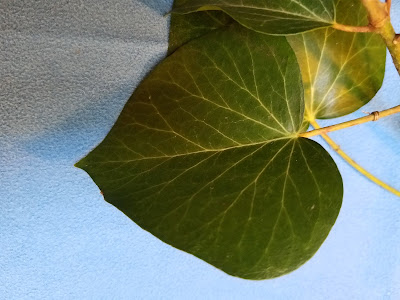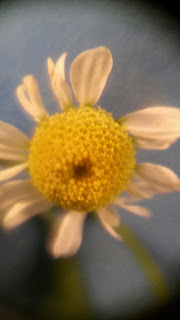Much of the second September session at the Natural History society was spent on the grasses, particularly those from Lake Roland. There is an ongoing project to control some of the invasives in the park, which will require some spraying. The project is an attempt to measure the effect of the herbicides on the surrounding flora. This is up on the serpentine area, and involves the current grasses. The discussion was interesting but we would need a guest post to do grasses. Take away for foragers is the plan for spraying deep in the park, you need to know your area for safe harvesting.
Someone brought in a burr cucumber, a native plant, but invasive in the sense of interfering with corn and soybean culture. We have that growing over the cunninghamia tree on the north side of Rolandvue where the greenhouse had been. It has the unusual fruit and the coiled tendrils. One plant can grow to almost 100 pounds and put out 40,000 seeds. The photos are from internet for convenience, it was covered last year. Latin is Sicyos anqulatus.


There were a few additional points made about the fringe trees and why both trees are bearing fruit even though they were supposed to be a male-female pair. The leaves are opposite, at first breaking the MAD Horse rule, but as close relatives of olive trees fringe trees are also in the ash family and thus should have opposite leaves. The leaves were small for the native species and so the two trees are probably asian. They may have both been female, but some trees including olives can change there sex according to environmental conditions, such as temperature, polyandrodioecious (sp), this can be whole or only some branches. A tree appropriate for the political times.
The fruiting of both trees may indicate other asian fringe tress in the area, or maybe hybridization if there are native fringe trees nearby. Finally there was a question about emerald ash borer. Fringe would be in the Ash family but apparently not a lot of data as to the susceptibility. The Asian variety may have an edge, or maybe not.
We showed a branch from the horse chestnut at the top of Cloverlea. There was agreement that the two trees are yellow buckeyes, but no argument with calling them horse chestnuts. They are in the horse chestnut family, just native to Ohio and have the smooth capsule around the nuts. They have the opposite leaves and the opposite branching as expected. It is hard to estimate the age of the two buckeyes, almost certainly planted, flanking the driveway, they probably pre-date the house built in 1952. They may account for many of the small buckeye trees in the neighborhood but most have not yet been bearing nuts.
 |
| The nut of the horse chestnut A. hippocastanum above and the yellow buckeye, A. flava below |
There were two vines, a Japanese honeysuckle, and the Virginia Creeper. Virginia creeper with the five leaves grows like poison ivy but not the leaves of three. It is turning a deep red in some areas. The honeysuckle is the addition to MAD Horse, MAD CAP Horse to include honeysuckle and viburnum. Leaves in opposite pairs go with red berries in opposite pairs. Apparently being the vine it is not a native variety statistically.
A late entry was goutweed, Aegopodium podagraria. The illustration is also from the net, since I have not recognized it in the neighborhood. It is so common it is almost certainly around. Other names are snow-on-the mountain, ground elder, and bishops weed. It is an invasive from Eurasia, in the carrot family like Queen Anne's Lace. It is about three ft high, flowers in umbrellas and hollow grooved stems. The stem may have a triangular profile indicating no toxicity(compare with water hemlock). Leaves are compound with more leaflets at the base.




















































